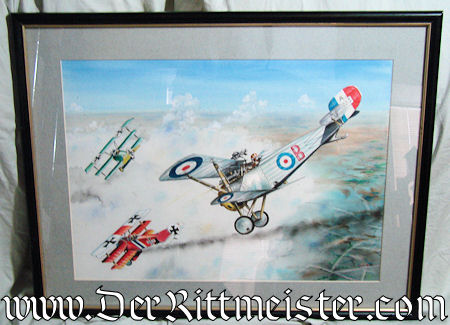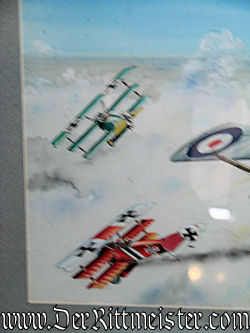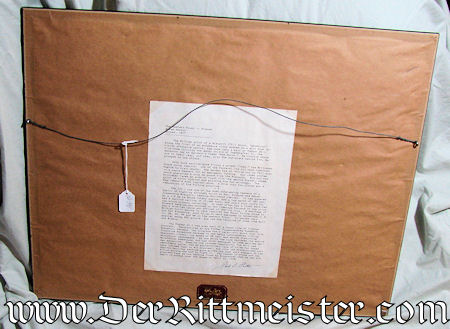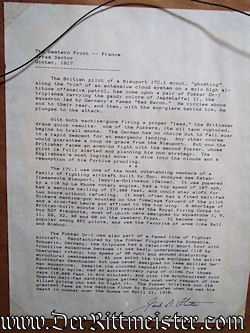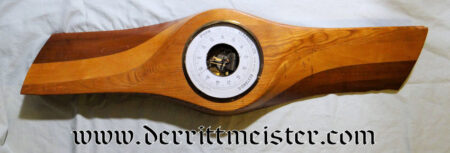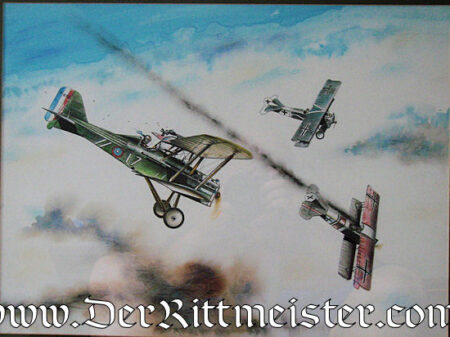Description
JACK D. HUNTER – ORIGINAL PAINTING – FEATURING TWO JASTA 11 FOKKER Dr. 1’s (TRIPLANES) AND ONE BRITISH NIEUPORT 17c
The late Jack D. Hunter was an amazing talent and a good friend. One of my favorite “Jack” stories occurred when his first book (The Blue Max) was being prepared for publication. As was standard for first-time authors, Jack was informed that his dust jacket would be rendered in black and white (artwork AND color were too expensive for a writer without a proven sales record). Jack, however, told the publisher that HE would provide the artwork if the dust jacket was published in color. The publisher printed 5,000 (a first-time author’s standard run) hardback copies, in color, as The Blue Max’s first edition. It became a top-seller as soon as it was published, then quickly was snapped up and turned into a major motion picture starring George Peppard, James Mason, and Ursula Andress. Jack went on to write seventeen books before his 2009 death. In addition, he became a talented aviation artist whose work resides in museums’ and enthusiasts’ art collections all over the world. Throughout his years as an artist, Jack produced paintings in two basic sizes. His more commonly-seen artwork was larger, measuring 13 ½” x 18 ½.”
Occasionally, Jack also produced a smaller size that measured 9 3/8″ x 14 3/8.” Today we are offering the larger painting, which is displayed within a 18 3/4″ x 23 3/4″ frame. The simple, elegant black molded frame is accented by an inner, gold trim band. The painting’s single gray matte provides a subtle contrast to the colorful action of its subject, a pair of Jagdstaffel (Jasta) 11’s Fokker Dr. 1’s (the legendary Triplanes) engaging a British Nieuport 17c. The Nieuport 17c was a very nimble and accomplished aircraft. While it was a bit unusual for the RFC (later the RAF) to employ a French airplane, the British aircraft industry was hard-pressed to produce enough aircraft to supply an expanding air service, AND replace the massive, daily losses. Sheer necessity required that they purchase 527 Nieuport 17’s from their French allies. Frankly, I rather enjoy seeing a Nieuport 17c here rather than the rather ubiquitous SE 5’s or Sopwith Camels. The plane’s graceful lines and its fuselage’s unusual side construction make the aircraft uniquely French even when arrayed in British colors. British Squadron Numbers 1, 6, 11, 29, 32, 40, and 60 employed this aircraft. It is also interesting to note that top British air aces Albert Ball and Billy Bishop (1894-1956) favored the sleek Nieuport 17. [Ball was the fourth-leading British ace.
Even though he was killed in 1917, he had won forty-five victories. His final air battle was with Lothar von Richthofen. Von Richthofen’s plane was shot up, so he withdrew to his airfield. Although the German High Command credited Richthofen with shooting Ball down, it was highly-unlikely. Ball evidently emerged from a cloud bank upside down following his pursuit of Richthofen, then crashed before he could recover. Ball was awarded the Victoria Cross posthumously. Bishop’s total of seventy-two victories made him Great Britain’s top WW I ace]. The painting reveals that the Nieuport 17’s pilot has just dispatched one triplane.
The wounded Fokker is smoking and headed for the ground. The remaining Dr. 1 is preparing to engage the Nieuport. Both triplanes are dressed in Jasta 11’s famous colors. Too often people tend to forget that only 320 Fokker Triplanes were produced during WW I. In spite of what movies such as 2006’s Flyboys depict, entire squadrons of red triplanes did NOT make up 90% of the Imperial German Air Service. Also, the Dr. 1 was not an easy airplane for a novice to fly. An experienced pilot like Manfred von Richthofen could do amazing things with the plane. It took great skill, however. While the plane was extremely maneuverable, it was not speedy. [The Fokker D. VII was considered Germany’s finest WW I combat aircraft, with approximately 3,300 examples produced. Manfred von Richthofen was involved in its testing phase, but died before the airplanes reached the squadron level. The airplane was specifically prohibited by the Treaty of Versailles. All surviving examples were required to be destroyed or turned over to Allied authorities]. The painting’s reverse sports a typewritten description by Jack D. Hunter, describing its action in great detail. The description ends with his signature. This beautiful painting is a must for any collection, especially since it features two airplanes from WW I Germany’s most famous jasta.
